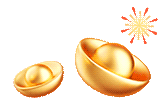The Chinese Spring Festival, also known as the Chinese New Year, is the most important traditional holiday in China, marking the beginning of the lunar new year. It is a time for family reunions, feasting, and the continuation of rich cultural customs that have been passed down through generations.




A popular legend is that of the Nian, a fierce beast that would come out every New Year's Eve to cause havoc. Unable to kill the beast, people eventually realized that it was afraid of red, fire, and noise. So, they started hanging red paper cutouts, setting off fireworks, and banging pots and pans to scare it away. This tradition of scaring away bad luck with fireworks and noise remains a popular custom during the Spring Festival.The legend not only add a mystical and exciting element to the festival but also underline the importance of values like cleanliness, orderliness, and goodwill in Chinese culture. They emphasize the belief that through collective efforts and positive actions, bad luck can be overcome, and good luck and happiness can be ushered in.




One of the most distinctive customs is the giving of red envelopes, known as "hongbao," which symbolize good luck and are usually given by elders to children as a sign of their blessing. The red color represents luck and happiness, while the money inside symbolizes prosperity.




Another essential practice is the cleaning of the house before the New Year, to sweep away bad luck and make way for incoming good luck. This is followed by decorating the home with red paper cutouts, couplets with popular themes of "good fortune," "happiness," and "wealth," and setting off fireworks to scare away evil spirits.The art of paper-cutting, also known as "jianhuachua" in China. This ancient craft involves cutting intricate designs out of paper using scissors or knives. These designs, often depicting flowers, animals, or abstract patterns, are then displayed on windows or doors to bring good luck and ward off evil spirits. The art of paper-cutting is not just a decorative element but also a testament to the skill and creativity of the artisan.




The New Year's Eve dinner is the most important meal of the year, often featuring dishes that symbolize prosperity, health, and family unity, such as fish and nian gao (a type of cake made from glutinous rice). Families gather around the table to feast and wish each other a prosperous new year.
We usually make dumplings in New year ,dumping is a traditional dish that is often eaten during many festivals. It has a similar shape to a gold ingot, which gives it the meaning of "bringing wealth and treasures" during the Chinese New Year. In addition, during the Chinese New Year's Eve, jiaozi are often filled with coins. Eating one of these jiaozi is said to bring good luck and good fortune in the new year.




The New Year's Day is usually spent visiting relatives and friends, paying respect to elders, and offering greetings of good luck. This is a time for giving and receiving blessings, strengthening family bonds, and celebrating the spirit of unity and happiness.




Throughout the festival, there are various other traditions and customs that add to the festive atmosphere, including watching dragon and lion dances, setting off fireworks, and playing cards for good luck. The Spring Festival is not just a time for celebration but a vibrant display of China's rich cultural heritage.




In conclusion, the New Year is a time to embrace tradition, relish in the flavors of culture, and appreciate the beauty of art. As we welcome a new year, let us also cherish the rich tapestry of traditions and customs that make each culture unique and vibrant. Happy New Year!



